When one uses the word ‘culture,’ it can encompass many different subjects. In this page, we want to look at a number of topics, such as Nabataean houses, ceramics, and water collection systems. In the following web page we will examine the basis of the old Nabataean culture as derived from their desert and Bedouin background. Then in another webpage we will look at the dramatic shift that took place in Nabataean culture as they moved from a desert and Bedouin world view to that of Hellenized urban dwellers. If you have not read Roland Muller’s article “Honor and Shame in a Middle Eastern Setting”, then please do so, before reading this page. It will help you understand some of the background thinkng behind this article.
Down through history, cultures have changed and adapted as outside pressure has been placed upon them. When there is little pressure, the change is usually slow and gradual. However, when extreme pressure is applied, such as in the case of domination by a foreign power, change can be quite rapid. When the Nabataeans lived in the desert, their culture changed gradually. However, when it was required of them to change and adapt, the Nabataeans demonstrated an amazing ability to adapt and adopt from those around them.
Some archeologists have noted that Nabataean architecture, art, and religion all had a certain affinity to other civilizations, but at the same time, they always displayed their own particular Nabataean style. Added to this, elements of very distant civilizations are also found in Nabataean culture whose existence cannot be satisfactorily explained, except by accepting the far flung reaches of Nabataean trade, both on land and on sea.
Originally, the Nabataeans were tent dwellers who combined trade with their pastoral lifestyle. In order to understand their culture, we will need to study what some of the early historians said about them. Diodorus, who wrote in 312 BC of the Nabataeans, provides us with a key description: “… some of them raise camels, others sheep, pasturing them in the desert. While there are many other tribes who use the desert as pasture, the Nabataeans far surpass the others in wealth although they are not much more than ten thousand in number; for many of them are accustomed to bringing from the sea frankincense and myrrh and the most valuable kinds of spices, which they procure from those who convey them from what is called Arabia Eudaemon. They are conspicuously lovers of freedom, and flee into the desert, using this as a stronghold. They fill cisterns and caves with rain-water, making them flush with the rest of the land, they leave signals there which are known to themselves, but not understood by anyone else. They water their herds every third day so that they do not constantly need water in waterless regions if they have to flee.”*
These cisterns are still being discovered in the deserts around Nabataea. They are usually bell-shaped caverns with small openings on the surface, with the large cistern hidden under the ground. Small water channels directed water from nearby hills and mountains into these cisterns. Sometimes the openings on the surface were covered with a large rock to hide them completely.
This passage seems to make it clear that the Nabataeans were pastoralists who grazed sheep and camels for a living. But even as early as 312 BC, this passage tells us that the Nabataeans had also established themselves as caravan traders, and that they brought spices and incense from southern Arabia to harbors on the Mediterranean. Since Diodorus describes them as being wealthy, they obviously had engaged in this trade for some time.
The Nabataeans had a dislike for houses and ownership of land, not wanting to be enslaved by anyone. So, when we later find them erecting huge cities and monuments, it seems as if a complete change had taken place in their culture. They seem to move directly from tents in the desert to massive and impressive palaces in the cities.
Archeologists to date have not been much help in solving this riddle, as most of the archeological studies that have been done on Nabataeans have been concentrated on the later years when they were building cities and erecting monuments. This is understandable, for desert nomads leave very little behind them when they move camp, and so there is little trace of Nabataean civilization prior to the time when they started erecting monuments.
Therefore, we will begin with the records that we have, starting with the various Nabataean rulers.
Rulers
History gives us the names of roughly a dozen kings who ruled the Nabataeans until 106 AD. They did so without apparent conflicts, problems of succession or even rivals for the position. The only major problem that historians face is discerning the accession date for the first ruler, and the name of his immediate successor.
The first certain reference we have to Nabataean kingship comes from Jewish history. At the time of the Egyptian campaign of Antiochus IV in 169 BC, conflict arose among the Jews concerning the high priesthood. A Jew named Jason, who had availed himself of the internal problems afflicting the Seleucids at that point, secured the high priestly office through expressed pro-Syrian (Seleucid) sentiments and by a present made to Antiochus IV who had only recently assumed power. This maneuver, although not acceptable to the orthodox Jews, at least settled the matter in Jerusalem for three years. Antiochus was quite content for Jason to assume the role of what he regarded as a civil office, for he did not consider matters of religion as important.
However, for the Jews the matter was very important, for Jason was not even from the priestly family, and thus was not qualified to be the high priest. Then Menalaus, a Benjamite, who was affiliated with the powerful Tobiad family, but also not from the priestly line, simply bought the office out from under Jason and Jason was forced to flee. He ended up in the tent of Aretas, leader of the Arabians and Nabataeans. In the end, Jason was sent on to Egypt, and Menalaus’s position was also attested.
Aretas is mentioned in II Maccabees 5:7-9 and this gives us a solid connecting date between the Nabataean leaders and the records of western civilization.
Over the centuries, as the Nabataeans moved from nomadic values to urban values, the role and function of their rulers changed. When the historian, Strabo, tells us that their leader was a democratic chief citizen among citizens, he in effect describes to us the role of a desert sheik, who rules by consensus rather than authority.
According to western historians, kingship soon evolved from tribal sheikdom and with it, the urge and opportunity to emulate neighboring, more sophisticated, cultures. As much of our knowledge of the Nabataeans comes to us through Roman historians, we must accept that the Roman historians interpreted the facts as they saw them through their Romanized worldview. Thus, they would speak of kings, rulers, and tyrants when referring to those who led the Nabataean people. The Nabataean rulers, on the other hand, used terms about themselves, such as “friend of the people” and “one who has given life and deliverance to his people.” Nowhere in Nabataean historical records do we get the feeling that the Nabataean rulers were tyrants or all powerful kings, as we have known them in the west.
Royal Marriages
Along with this, the Nabataeans accorded a high position to their women. Women could inherit property and dispose of it. Women were often honored, such as the queens whose pictures appeared on coins, sometimes alone and sometimes with their husbands. In addition, many of the Nabataean gods were depicted as females.
During the time of Aretas IV, the queens of his reign were his sister Huldu and his sister Shuqailat.
There is no record, however, that tells us if these women were indeed the sisters or wives of the king, or, if they were his sisters, whether they were married. Some have even speculated that perhaps they appeared on the coins simply because of a wish of someone in the royal house.
Offices
From the thousands of Nabataean graffiti, we can discover the names of many different offices held by Nabataeans in the middle and late kingdom, after they had left their nomadic lifestyle and had settled. Some of these offices were: eparch, chiliarch (military rank, commander of 1000), hipparch (military rank, perhaps cavalry general), strategos (military rank, infantry general of 3000 plus), epitropos (First Minister), and ethnarch (deputy of the ruler.) When Paul was in Damascus he noted that there was a Nabataean ethnarch of Aretas in control there. Others offices found in graffiti are: mas’r (administrators), qara (readers), priests, scribes, and sculptors.
From the inscriptions on tombs, reference is made to inheritance, property, etc., implying there was a legal profession. This is further augmented by the fact that Nabataean merchants were continually creating, fulfilling and disputing contracts for their merchant business.
Along with this, Nabataeans guided, guarded, and supplied the caravans as they moved through the desert. This meant that there were caravan drivers, caravan masters, navigators, guards, station attendants, etc.
The Nabataeans also handled the bitumen trade, raised horses, and cultivated palm groves for date production, as well as tending balsam groves (as indicated in Antony’s attempt at taxation.)
As their civilization developed, other professions were added. From Nabataean graffiti we can discover trades such as: copper-smith, blacksmith, carpenter, surveyor, mason, warrior, hunter, laborer, and others along with the government and religious designations, as well as those of artists and sculptors, musicians and singers. Along with this, there are some references to ‘slave,’ and one reference to a ‘freeman.’
Classes may have developed as well, as can be implied in the layout of the Graeco-Roman amphitheater in Petra with its various sections of seats.
Role of the family
Family relationships remained strong throughout the culture. This can be seen in the graffiti, in the words of parental relationships, and their habit of rehearsing lineage as part of naming. There are also numerous instances of Nabataeans marrying non-Nabataean wives, and of Nabataean women marrying non-Nabataean men.
Slaves
Strabo tells us that they had few slaves or servants. This was true in Petra, where very few of the names that have come down to us are servant-hood type names. In Egra, however, there are many different kinds of slave names: ‘Amat, ‘Aphityu, Hana, and Zabin. On the other hand, around sixty percent of tombs in Egra belonged to the upper class.
If the Nabataeans did not generally have slaves, one would imagine that the Nabataean Kingdom would become a haven for escaped slaves. From history we know that several rulers who were in trouble escaped to the Nabataean court, so it would seem in keeping that slaves running from their Roman masters might also try and make for the Nabataean Kingdom.
Houses
Archeologists can tell a great deal about a civilization by examining their houses. The problem with the Nabataeans, however, is that archeologists have not been able to find a single Nabataean house from the earlier Nabataean period. For example, there was a dig at Moyet Awad (Moa in the Arabah), on the Petra- Gaza road, that found coins, pottery, and a caravan station, but no houses.
Even to this date, archeologists have not dug up a single house from before 100 BC in the great city of Petra. This should not seem strange to us, as the historian Diodorus made it plain when he recorded: “*They have a law neither to sow corn nor to plant any fruit-bearing plant, nor to use wine, nor to build a house. This law they hold because they judge that those who possess these things will be easily compelled by powerful men to do what is ordered them because of their enjoyment of these things. Some of them keep camels, others sheep, pasturing them over the desert.*” (XIX.94.3-4)
In the Early and Middle Nabataean period, the Nabataean people must have lived exclusively in tents, and only very occasionally are their camping spots found. Usually these are identified by a little broken pottery and blackened stones used for cooking and upturned stones, possibly used for worship.
During the time that the Nabataeans were nomads, they had little use for pottery and used water skins and wooden bowls instead. Hence, little or no Nabataean pottery can be found before 100 BC. When the Nabataeans suddenly started using pottery, however, it was the best pottery of its time in the whole region of Palestine and Syria.
The same is true of their architecture. Their earlier buildings are excellently constructed, with well made foundations and walls of finished stone.
Why is this? I suspect that this is because the Nabataeans copied what they saw and could pay to get it done right. On their visits to eastern Asia, and especially China, they saw beautiful pottery and copied it. Thus, they were copying the masters, not the common pottery of the Middle Eastern world. The same is true of their architecture. When they wanted to build buildings, they started with public buildings for administration and worship, and memorials for their dead. As they had the money, they copied the masters, and built phenomenal structures. This is quite incredible, when you consider that most of the people still lived in tents.
And why shouldn’t they live in tents? In ancient cities, streets were narrow, houses were crowded, and sanitary conditions were far from satisfactory. On the other hand, when a Nabataean camping spot got too dirty or soiled, the Nabataeans could simply move a short distance away and set up again in a clean spot. Nature, in its own way, would clean up the mess and several years later the original camping spot would have reverted back to its natural state.
In a camping spot, animals could be kept far enough away to keep odors down, and when the weather changed, tents could be located on the lee side of a hill in winter, to keep away from the wind, and on the other side of the hill in the summer, to catch the breeze.
In the cities, the situation was different. As I mentioned, in Mampsis, the main ‘road’ was simply a gully that drained through the center of the very crowded town. On the other hand, the public buildings, caravan center, reservoir, bathhouses, and temples were completely separated from the squalor of the city.
Rather than a slow gradual change from rural to urban housing, when the Nabataeans did build houses, their houses were large and spacious, while the paths outside were narrow and dirty. Can you imagine the social dynamics that happened, as the Nabataeans quickly grew wealthy and moved from their simple tents into these huge houses? In some ways a parallel can be seen in the culture of the oil-rich Arabs of modern Arabia who went from tent dwellers to being wealthy businessmen.
Like the houses of the oil-rich Arabs today, Nabataean houses were not plain, but were stuccoed and painted with reds, blues, and gleaming whites. Even Strabo comments: “Their homes through the use of stone, are costly, but on account of peace, their cities are not walled.” (XVI.4.26)
Ceramics
Nabataean common-ware pottery was simple and similar to the pottery used by the civilizations around them. Its distinctive characteristic was the use of red clay that gave it a bright red color. Most Nabataean common-ware pottery was well made but plain, with little decoration. This, however, was not true of their fine, thin-wares. Nabataean fine thin-ware pottery was all made locally, and some was plain, but the majority was painted. It was vaguely similar to Edomite painted pottery, but of a much higher quality. In fact, Nabataean fine thin-ware was perhaps the finest ceramics produced in the Middle East up to that time. It has been suggested by some that their taste in fine pottery came from pieces they might have imported from China.
As stated earlier, while the Nabataeans were nomads, they had little use for pottery and used water skins and wooden bowls. Consequently, Nabataean pottery does not generally exist from before 100 BC. Then, suddenly they began to produce their own pottery, both common-ware pottery for every day use and very fine thin pottery for the wealthy and for religious usage. This pottery, especially the later kind, was produced in huge quantities, and large mounds of broken Nabataean pottery lie in Petra and Oboda today.
Their painted pottery was unique, with figures of ancient mythology, flowering vines, flowers, and even birds with bright plumage. Some of the finest and thinnest of Nabataean painted pottery was found underneath the paved floor of the central altar-shrine of Khirbet Tannur, and is dated no later than the end of the first century BC. Recently archeologists have discovered near complete pottery trays, bowls, and other objects in an unrobed tomb in Jordan.
In 1980 a series of Nabataean pottery kilns was discovered near the government rest house in Petra, when a new road to Um As Sahun was being constructed. The kilns were of a late date, probably first century AD, and were abandoned before the Byzantine period.
Water Catchment Systems
The Nabataeans greatest accomplishment was probably their system of water management. They developed a system to collect rainwater using water channels, pipes, and underground cisterns. Added to this, they developed very strong, waterproof cement, some of which is still in existence to this day.
They also developed sophisticated ceramic pipelines and reservoirs using gravity feeds (siphons or inverted siphons), that served the developing urban centers. Outside of the cities, dams closed off wadis to collect water during the rainy season, while stone circles or terraces retarded runoff from slopes and trapped valuable topsoil so that their irrigation lines could feed crops.
The Nabataeans seem to have had a knack for developing water systems from their earliest days. The historian Diodorus tells us: “For in the waterless region, as it is called, they have dug wells at convenient intervals and have kept the knowledge of them from people of all other nations, and so they retreat in a body into this region out of danger. For since they themselves know about the places of hidden water and open them up, they have for their use drinking water in abundance.” (II.48.2)
Diodorus goes on to say: “They take refuge in the desert using this as a fortress; for it lacks water and cannot be crossed by others, but to them alone, since they have prepared subterranean reservoirs lined with stucco, it furnishes safety. As the earth in some places is clayey and in others is of soft stone, they make great excavations in it, the mouths of which they make very small, but by constantly increasing the width as they dig deeper, they finally make them of such size that each side has a length of about 100 feet. After filling these reservoirs with rainwater, they close the openings, making them even with the rest of the ground, and they leave signs that are known to themselves but are unrecognizable to others. They water their flocks every other day, so that, if they flee, or wander through waterless places, they may not need a continuous supply of water.” (XIX.94.6-9)
Numerous Nabataean cisterns can be seen throughout the Nabataean Empire, and far out into the desert. Early Iron Age cisterns were simple and plastered. The Nabataeans perfected the Iron Age system by creating a perfect cube, with corners that formed perfect right angles. They sometimes added perfectly made stone support pillars with accurately spaced, combed, oblique stone dressing. Onto this prepared surface, they plastered cement composed of water-resistant plaster of unmatched quality. Archeologists feel that this must have taken them hundreds of years to develop and perfect.
The well made reservoirs that Diodorus says were common in his day, point to the fact that the Nabataeans must have been developing this skill during earlier years, perhaps back to the time of the Babylonians, or even the Assyrians. Perhaps they learned some of their skill from the people of southern Arabia, who were creating waterworks during the Iron Age.
Herodotus, when writing about the Nabataeans tells us, that he believed they could find water anywhere in the desert. He mentions that Cambyses used an Arab to bring him water in the desert as he moved his army against Egypt. The Nabataeans refused to tell the army where water came from, but they showed up at regular intervals in the desert, with their camels loaded with water skins, enabling the army to pass across the desert into Egypt. The Nabataeans made up a story by explaining that there was a wonderful river in the desert and that they used a water duct made of sewn ox-hides to transport the water over many miles. Herodotus thought that the story was not very credible. (History III.5, 7-9) What probably happened was that the Nabataeans, in exchange for financial return, simply supplied the army with water from their secret cisterns that were scattered along the caravan route; which would most likely be the route that the army took. By telling stories, however, they could keep their water sources secret and at the same time, profit handsomely, a typical Nabataean trait.
From the descriptions of Herodotus and Diodorus-Hieronymus, it seems that the Nabataeans had a well-developed water collection system in place as early as 600 BC. If this is true, then why did they develop such a complex system, and where did they learn it? Most puzzling of all, why did they develop these early systems along caravan routes that had been used for many centuries, and already had established watering holes? We will look at some possible answers to these puzzling problems a bit later.
Conclusion
Nabataean traders traveled widely. They had contact with the civilizations of Europe, Egypt, Africa, Mesopotamia, Southern Yemen, Persia, India, and even places such as China. These connections opened doors to the greater world around them, fostering an impressive borrowing of advantageous lifestyle elements. Such extensive borrowing clouds the issue of which Nabataean cultural attributes are really “Nabataean” in origin. Certainly features were adopted, adapted, and innovated from things they saw in other locations. Regardless of the confusion, it is clear that the native abilities of the Nabataeans resulted in the creation of a unique mosaic of art, architecture, religion, and technology. In the face of Hellenistic and Roman influences, the Nabataeans maintained a high level of political independence and were freer than many neighboring societies to interpret outside elements in a distinctly Nabataean manner.
An appreciation of technological sophistication is evident in many aspects of Nabataean life such as architecture, ceramics, metallurgy, chemistry, mathematics, construction, water collection and distribution, shipbuilding, navigation and even toxicology. As they borrowed, adapted, and interpreted, they mastered many different skills and arts and thus created a unique Nabataean worldview and culture.



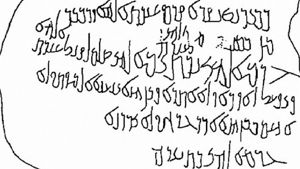
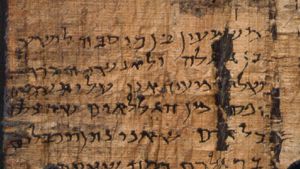
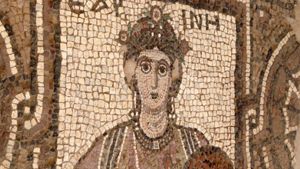

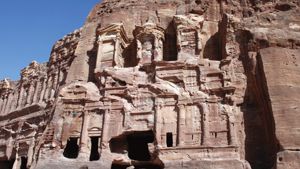
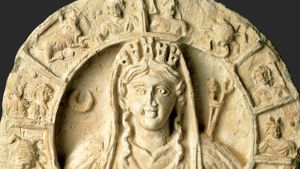
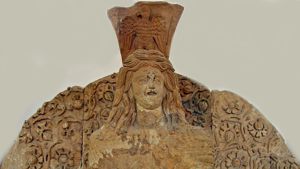
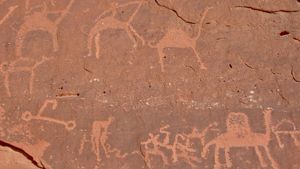
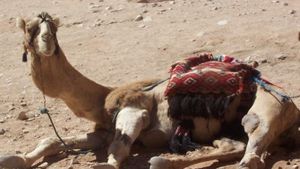
Page Discussion
Membership is required to comment. Membership is free of charge and available to everyone over the age of 16. Just click SignUp, or make a comment below. You will need a user name and a password. The system will automatically send a code to your email address. It should arrive in a few minutes. Enter the code, and you are finished.
Members who post adverts or use inappropriate language or make disrespectful comments will have their membership removed and be barred from the site. By becoming a member you agree to our Terms of Use and our Privacy, Cookies & Ad Policies. Remember that we will never, under any circumstances, sell or give your email address or private information to anyone unless required by law. Please keep your comments on topic. Thanks!